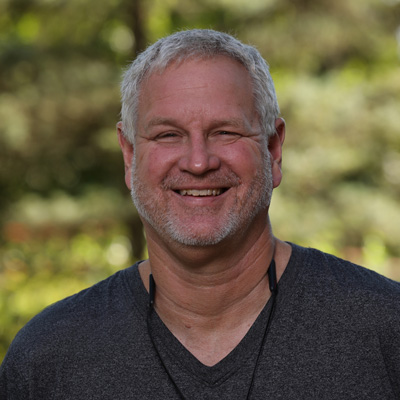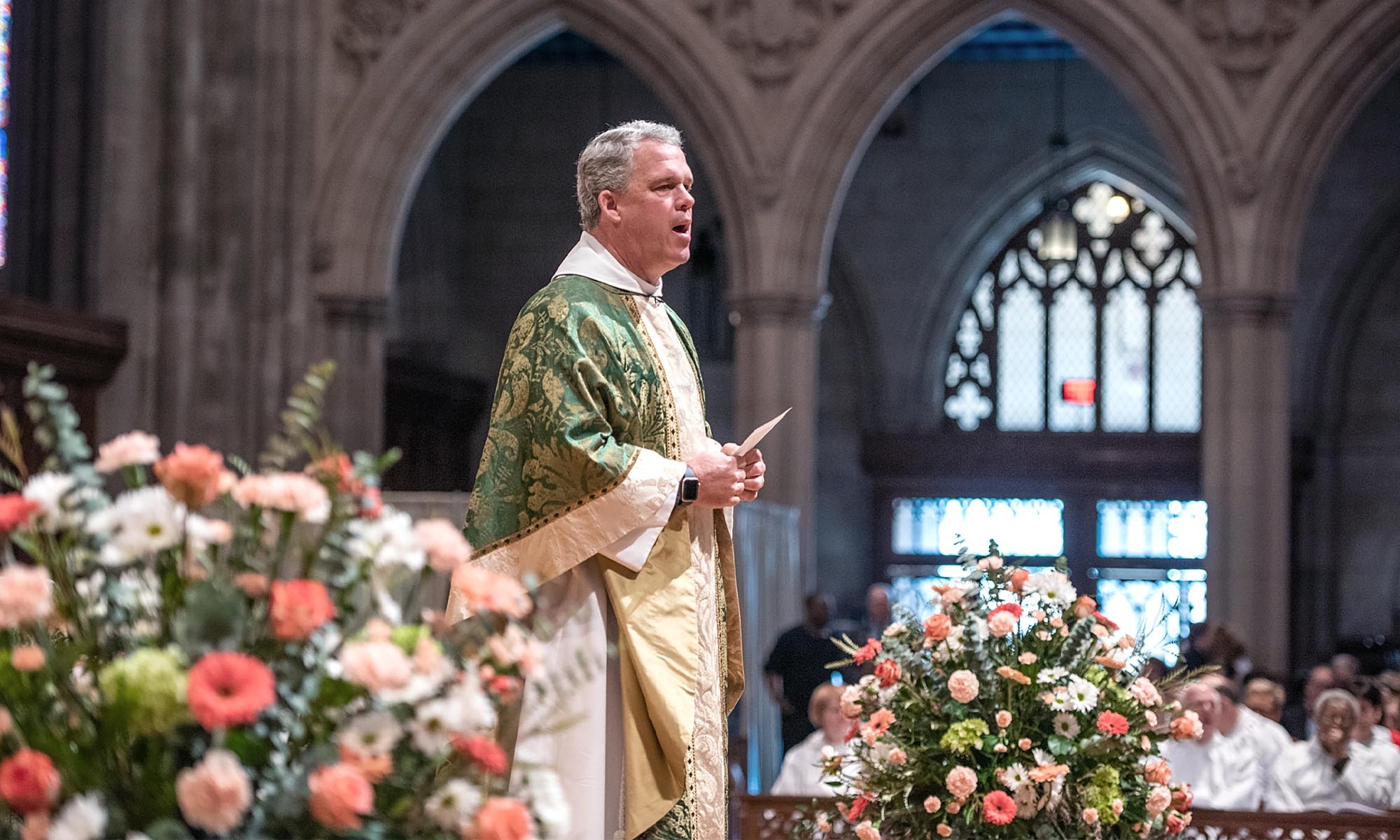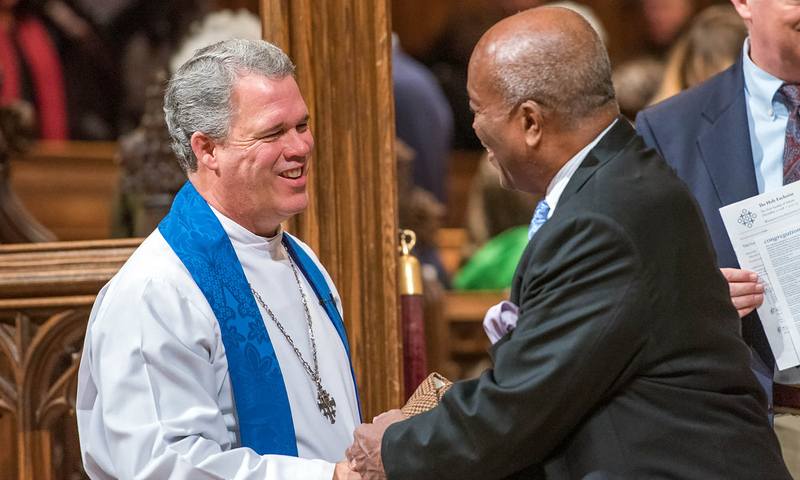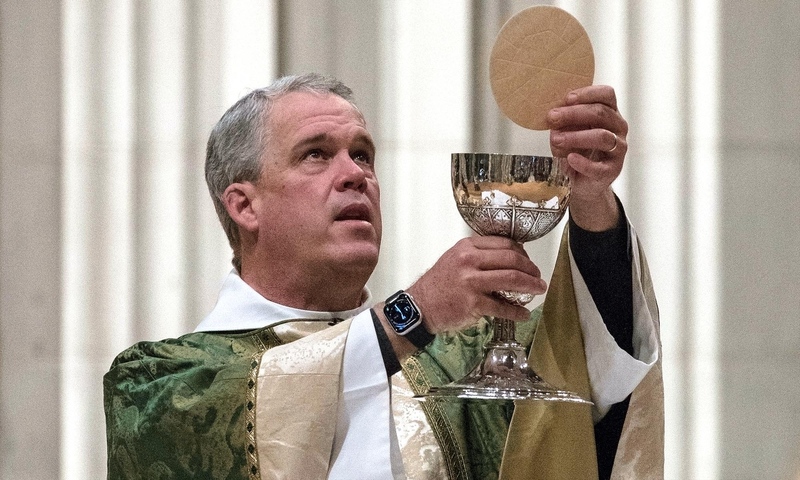When his Denison friends see The Rev. Randy Hollerith ’86 on television, as he was while officiating the state funeral of former President Jimmy Carter in 2025, they send him messages.
They are enormously proud of Hollerith, who followed his calling after leaving The Hill and became dean of the National Cathedral in Washington, D.C., in 2016. But old college buddies being what they are, there’s often levity attached to the well-wishes.
“They will text me all the time and take potshots,” Hollerith says. “They joke with me and ask, ‘Why didn’t you wear your Grateful Dead T-shirt?’”
Turns out a love of Denison, religion, and Jerry Garcia runs in the family.
“I was the original Deadhead,” says his brother, Herman “Holly” Hollerith IV ’78, a retired bishop of the Episcopal Diocese of Southern Virginia. “Randy stole all my albums.”
Randy Hollerith’s interests at Denison were as eclectic as the stylings of his favorite jam band. He played rugby and football for one season. He pledged Sigma Alpha Epsilon. He majored in philosophy and religion, thinking he might become an attorney or psychologist.
While Hollerith didn’t consider the ministry until his junior or senior year, what he learned at Denison has served him well as head of one of the world’s largest cathedrals.
“Denison taught me how to think critically,” Hollerith says. “It taught me that it was OK to be open to new ideas, to explore different possibilities, to question, to argue. Everything about my intellectual formation really happened in my four years at Denison.”
Randy Hollerith and his older brother come from a family of engineers. His great-grandfather, Herman Hollerith, invented the punch card tabulating machine, marking the start of mechanized binary code and semiautomatic data processing.
The Hollerith brothers chose a different path, one that Randy did not take until his gap year between Denison and Yale Divinity School. He recalls having a “wrestling match with God” as he pondered his choices.
“I applied to Yale Divinity School and I deferred for a year,” Hollerith says. “I worked in an acute care psychiatric hospital for adolescents and was thinking about becoming a clinical psychologist. It was an incredibly powerful experience, but I knew at the end of that year that mental health for mental health’s sake without the faith component was not enough for me. I was being called into ministry.”
He met his wife, Melissa, at divinity school, and their wedding party included Denison groomsmen. Hollerith, led Episcopal congregations in Savannah, Georgia, and Richmond, Virginia, before being named the 11th dean of the National Cathedral. His wife is a priest and chaplain at St. Albans School in Washington.
Hollerith has a Denison connection at the cathedral. Kelly Brown Douglas ’79 serves as the Canon Theologian, and they occasionally speak of their Denison days and having Dave Woodyard ’54 as their religion professor.
Hollerith admits there was a steep learning curve in joining the National Cathedral, with its myriad responsibilities. On some days, 30 busloads of people tour the grounds.
“It took me a long time to adjust because the cathedral is not only a big church with a congregation,” he says, “but it has so many different constituencies who claim a piece of it.”
Under his leadership, the National Cathedral’s finances have stabilized, resulting in growing budgets that have seen operating surpluses for eight consecutive years. They just completed a five-year campaign that raised more than $180 million.
Hollerith overhauled the cathedral’s video infrastructure and while the pandemic shuttered its doors for 18 months, digital services beamed across the globe helped to double its donor base. The Easter services in 2020 were viewed by about 50,000 people, including worshippers from every continent.
“Apparently, we had one guy from an Antarctica scientific station tuning in,” Hollerith says.
Among its many functions, the cathedral holds state funerals and inaugural prayer services. These are high-profile events that take fastidious planning. Hollerith has presided over state funerals for Presidents Carter and George H.W. Bush, as well as political dignitaries like Secretary of State Madeleine Albright and Sens. John McCain and John Warner.
“We think it’s part of our mission to create a space where the nation can both mourn and celebrate,” Hollerith says. “A funeral is a great example where you have left and right, Republican and Democrat, coming together.”
The intersection of religion, culture, and politics in Washington can be a noisy one. Denison philosophy professor emeritus Steve Vogel, who taught Hollerith, says he’s impressed with how his former student has navigated the confluence when asked to explain the cathedral’s position or his own on hot-button issues.
In polarizing times, Hollerith says the cathedral’s primary function is to promote civility and what he calls “a better way.”
“It’s finding a better way to live together, a better way to talk to each other, a better way to listen to each other, a better way to disagree,” he says.










